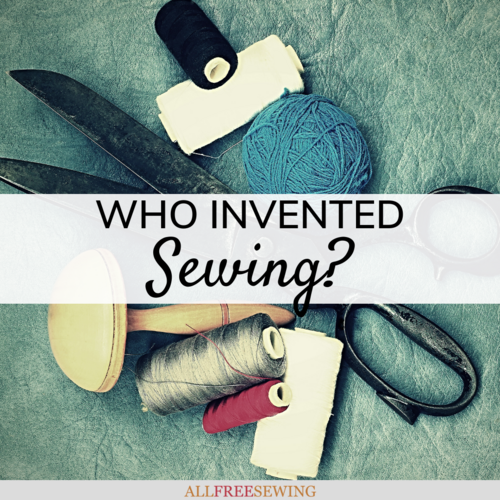Who Invented Sewing?
Discover the history of sewing from stitching with stones in 45,000 BC to the very first sewing machine!
Man has been transforming the world around him for millions of years, turning raw materials into useful technology. Early human species began making stone tools nearly 2.5 million years ago to help make food and build shelters. It is no wonder, then, that our race should eventually learn to create tools to make clothing!
But, who invented sewing? According to an article by the Smithsonian's National Museum of Natural History website, "Homo sapiens," our species engineered new ways to adapt to our environments. This included sewing warm clothes to survive cold weather beginning around 45,000 BC.
So, when it comes to the history of sewing, there is a rich timeline to go through. As proposed in the paragraph above, modern-day sewists belong to a tradition that has been in place for thousands of years. Sewing is a part of our collective history, and it joins us together. If you weren't proud to wield a needle and thread before, you will be after reading this history of sewing!
Sign Up For More Free Patterns >>>
The First Sewists: 45,000 BC
Sewing, as a practice, has been a part of culture for tens of thousands of years, beginning around 45,000 BC in Central Asia. According to Professor Karen Carr of Quatr.us in the article "Who invented sewing? History of clothing," early sewing techniques generally involved poking holes into a fabric with stone tools and then threading a cord through the holes. A hole was then added to the tools starting around 40,000 BC so that cord could be threaded through the fabric.

Refining Sewing Technique: 40,000 BC - 100 BC
Sewing techniques were then refined over thousands of years, including the advent of bronze needles in Iran and iron needles in 100 BC Northern Europe. Thread spinning techniques were also improved over the course of time.
The Invention of the Sewing Machine
The sewing machine itself has a less linear. In the SmithsonianMag.com article "The Many, Many Designs of the Sewing Machine," author Jimmy Stamp states that the first design and patent for the sewing machine are attributed to English cabinet maker Thomas Saint in 1790.
Sewing machine prototypes were designed by both Viennese tailor Josef Madersperger in 1814 and French tailor Barthelemy Thimonnier in 1830, but these designs were not made available to the public.
The sewing machine, as we know it today, was built in 1846 by Massachusetts tailor Elias Howe, who was also granted a patent. Howe's machine was not initially popular in America, so he took his design to England and sold his patent for £250.
However, Howe's invention soon caught on in America, and sewing machines were widely produced against the right of his patent. One of the most popular new manufacturers included Isaac Singer. Howe’s patent expired in 1867, though, which then opened up sewing machine manufacturing to more individuals. We're guessing you've heard of Singer sewing machines! They are still one of the most popular brands around.
The Future of Sewing
Though sewing has always been a human-dominated activity, recent advancements in technology might eliminate the need for humans in the sewing industry.
In an article by The Wall Street Journal, "Why Sewing Robots May Replace Humans in Factories," writer Jason Bellini reports that robotic and computer-enhanced technologies no longer require human operation. Instead, technology is available that can mass-produce clothing at the push of a button.
Does this mean that all sewists will be replaced by "sewbots" and printer-like machines? Probably not. Though humans may be defined by their ceaseless innovation, individual sewists like you can keep the craft alive.


